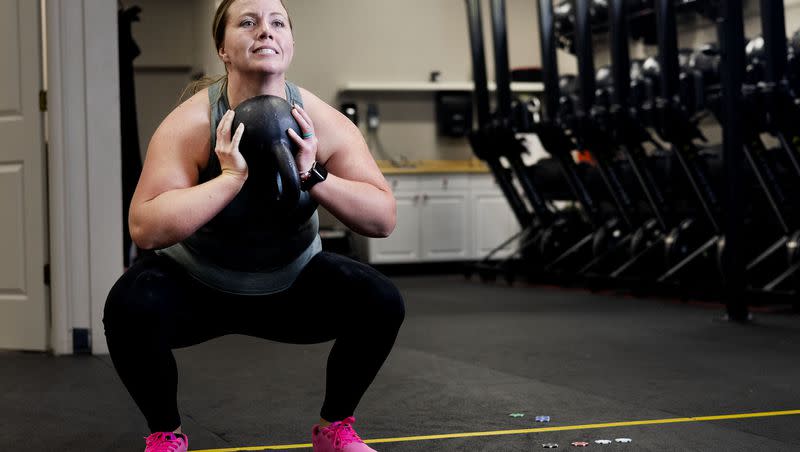This exercise can prevent osteoporosis in women or help rebuild what’s been lost

Lots of folks lift weights to build muscles and tone their bodies. But lifting is also a bone builder that can minimize the risk of breaks because of osteoporosis.
Osteoporosis is a bone disease that occurs when bone mass and mineral density decrease. Bones become weaker, increasing the risk of breaks. A bone naturally has tiny holes, but as density decreases, the holes enlarge, creating a Swiss-cheese effect. Osteoporosis literally means “bones with holes.” Sometimes big ones.
Bones get more brittle, too with osteoporosis. So even mild stresses can cause a break. The National Institutes of Health says those breaks are most common in the hip, wrist or spine.
The good news is that bone is alive and the density can be improved.
Harvard Health Publishing recently reported that roughly 8 million women and 2 million men in the U.S. have osteoporosis, which leads to more than 2 million fractures every year. “Hip fractures are usually the most serious. Six out of 10 people who break a hip never fully regain their former level of independence. Even walking across a room without help may become impossible.”
One of the best solutions — both to prevent osteoporosis from developing and to regrow bone once the condition is present — is to lift weights. Heavy ones.
According to National Geographic, “For decades, the conventional advice for people with osteoporosis was to engage in gentle exercises — but nothing too stressful. ‘Everybody had decided the way to manage osteoporosis with exercise was to just stop falling,’ says Belinda Beck, a professor at Griffith University in Australia who has studied bone health for more than 20 years. Balance and stability exercises were prioritized, with the focus on preventing falls. But that kind of exercise doesn’t build new bone.”
Beck said that people already diagnosed with osteoporosis had become “terrified to do anything because they’re going to break — so their life kind of closes in around them because they stop being as active. They can’t lift their grandchildren, they can’t do things in the garden anymore.”
Related
What pecans and fragrance add to health — and childhood adversity takes away
Health news on infections and dementia, addiction and seeing a dentist online
She noted that the process of bone building is the same over a life course: It bends when it’s pressured and heavy weights do that. Though bone seems solid, those small holes are linked by channels. When the bone bends, fluid moves past the bone’s stress sensors, sending a bone-building message.
And building bone back by lifting weights can happen at any age.
“The good news is that research shows that strength training can play a role in slowing bone loss, and can even build bone. This is tremendously useful to help offset age-related declines in bone mass,” the Harvard article said. “Activities that put stress on bones can nudge bone-forming cells into action. That stress comes from the tugging and pushing on bone that occur during strength training (as well as weight-bearing aerobic exercises like walking or running). The result is stronger, denser bones.”
There are also other tips to keep bones strong, according to the Australian government’s Better Health, which also touts strength training. Among tools and tips:
Weight-bearing exercises help maintain bone strength. Also include high-impact exercise like jumping and skipping rope.
Stop smoking and limit alcohol intake.
Eat calcium-rich foods.
Get enough vitamin D.
Limit caffeine, since it can interfere with calcium absorption.
Certain medications may also help.

